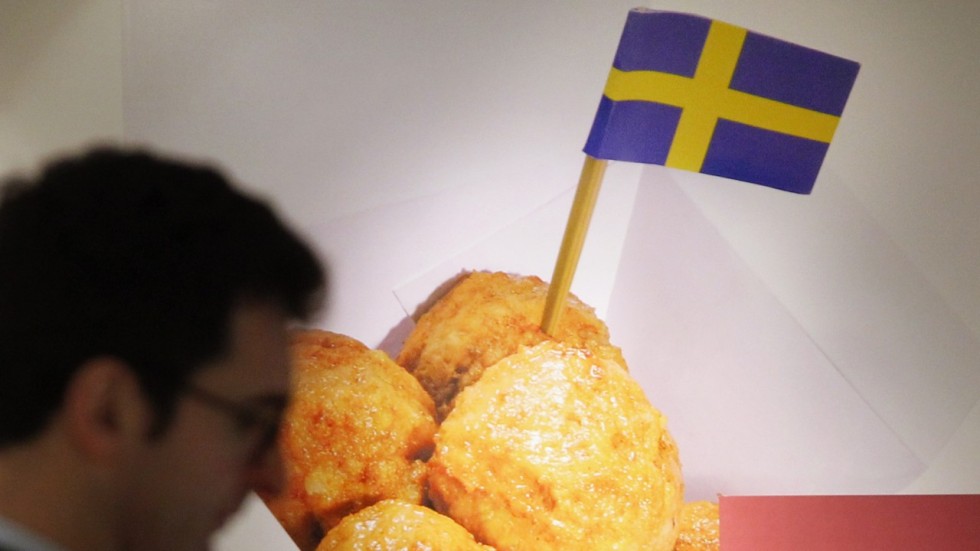
Wander into an Ikea store in Hong Kong and it’s often not the furniture that people are queuing to buy but the Swedish retail giant’s snacks … including meatballs, around two million of which are consumed in the 340 Ikea stores worldwide every day, according to the “official site of Sweden”.
But, as shocked Swedes learned this week from their own government, Swedish meatballs – considered the national dish – are in fact Turkish.
“Swedish meatballs are actually based on a recipe King Charles XII brought home from Turkey in the early 18th century,” said a post on Sweden’s official Twitter account. “Let’s stick to the facts!” it said.
Swedish meatballs are actually based on a recipe King Charles XII brought home from Turkey in the early 18th century. Let's stick to the facts! pic.twitter.com/JuTDEjq9MM
— Sweden.se (@swedense) April 28, 2018
The post lit up Twitter, with users of the social media site expressing shock and sadness at the revelation that Sweden’s King Charles XII, who took the throne in 1697 at the age of 15, returned to Sweden in 1715 from several years in Bender (now Bendery in Moldova), which was then under Turkish rule, with a meatball recipe tucked in his bag.
It isn’t the first time a dish or food considered traditional in one country has been found, or suspected, to have its origin in another country.

1. Spaghetti – Italy vs China
No Italian would ever admit that spaghetti was invented in China rather than Sicily. The pasta, made from flour mixed with water and salt and cooked by boiling, has been around since the Roman empire. Yet some claim that the Italian merchant and explorer Marco Polo brought spaghetti to Venice from East Asia, where he ate noodles, made either from rice flour or wheat flour, during his fabled travels.

2. Kimchi – Korea vs Japan
A spicy dish made of fermented pickled vegetables with ginger, red pepper and garlic started a culinary dispute in 1996 when Japan proposed designating Japanese kimchi, called kimuchi, an official food for the Olympic Games in Atlanta. The Japanese version of the Korean dish began gaining popularity in Japan, and overseas, stoking a feud with South Korea, which petitioned the World Health Organisation and the United Nations Food and Agriculture Organisation’s Codex Alimentarius commission to establish an international standard for kimchi.
The then South Korean president, Lee Myung-bak, even had a word for the international campaign: gastrodiplomacy.

3. Chicken tikka masala – India vs Britain
This dish – chunks of roasted marinated chicken in a spiced curry sauce – is one of the most popular dishes in Britain, so much so that in 2009, then government minister Robin Cook stated that it was “a true British national dish”. But its origin is a bit of a mystery.
Some, like food critic Rahul Verma, who writes for Indian newspaper The Hindu, say it originated in the Punjab region of the Indian subcontinent, while others say it was created in Glasgow, Scotland. Ethnic-food historians Peter and Colleen Grove say the dish “was most certainly invented in Britain, probably by a Bangladeshi chef”.

4. Pavlova – Australia vs New Zealand
Named after Russian ballerina Anna Pavlova, who visited Australia and New Zealand in the 1920s, this dessert – a gooey meringue outer shell with a marshmallow-like centre topped with fruit and cream – has been at the centre of many pub debates as to which country invented it.
In 2010, the Oxford English Dictionary took the biggest step towards settling the debate when it said that the first recorded pavlova recipe appeared in New Zealand in 1927, in a book called Davis Dainty Dishes.

5. Hummus – Lebanon vs Israel
Made from mashed chickpeas (hummus comes from the Arabic word meaning “chickpeas”) blended with tahini, olive oil, lemon juice and garlic, hummus is popular in the Middle East and Mediterranean countries. As for where the globally popular dip was first concocted – well, that’s where it gets political. In 2008, the president of the Association of Lebanese Industrialists filed a lawsuit against Israel for infringement of food copyright laws over hummus, while Lebanon’s government petitioned the European Union to classify hummus as a uniquely Lebanese food.







